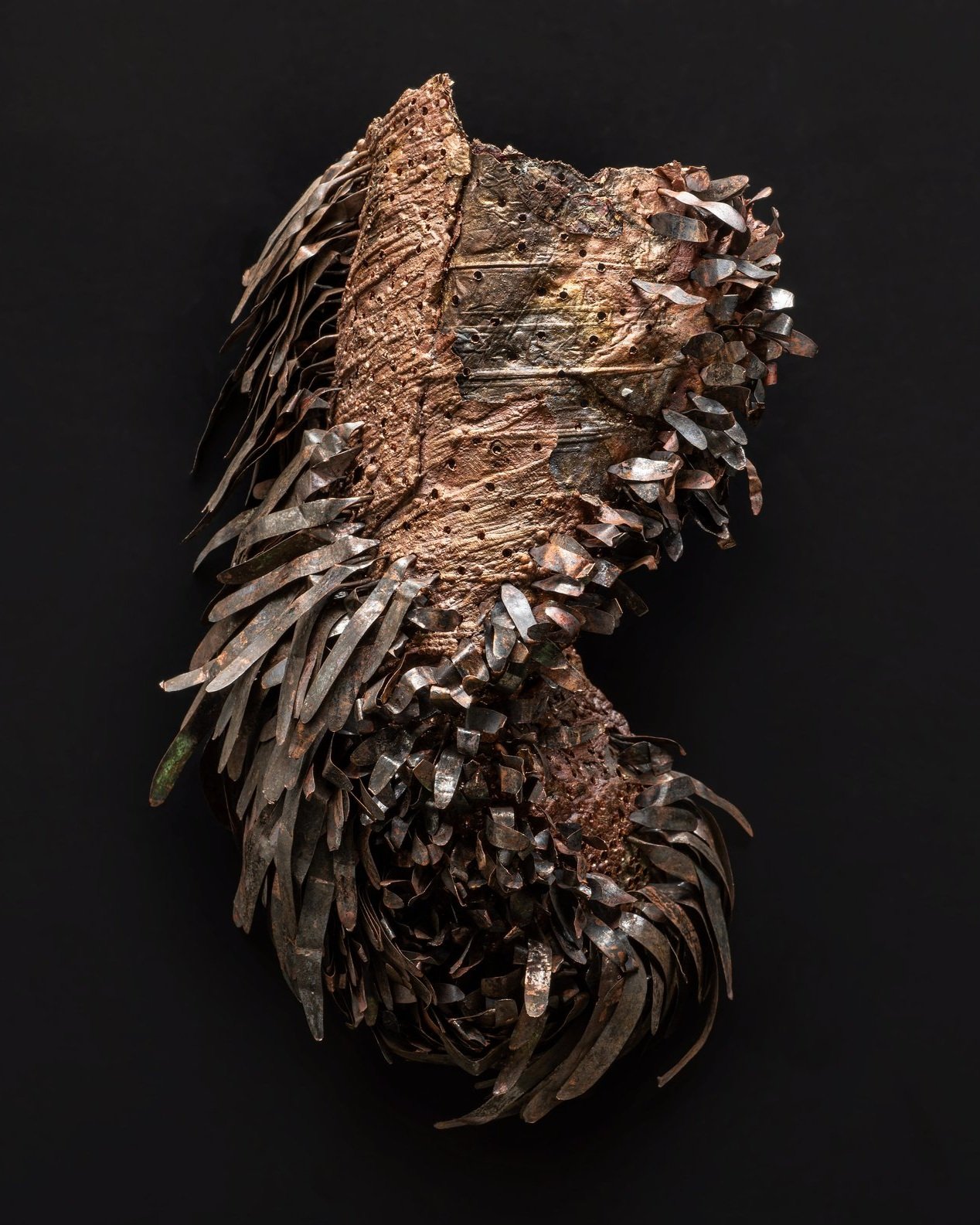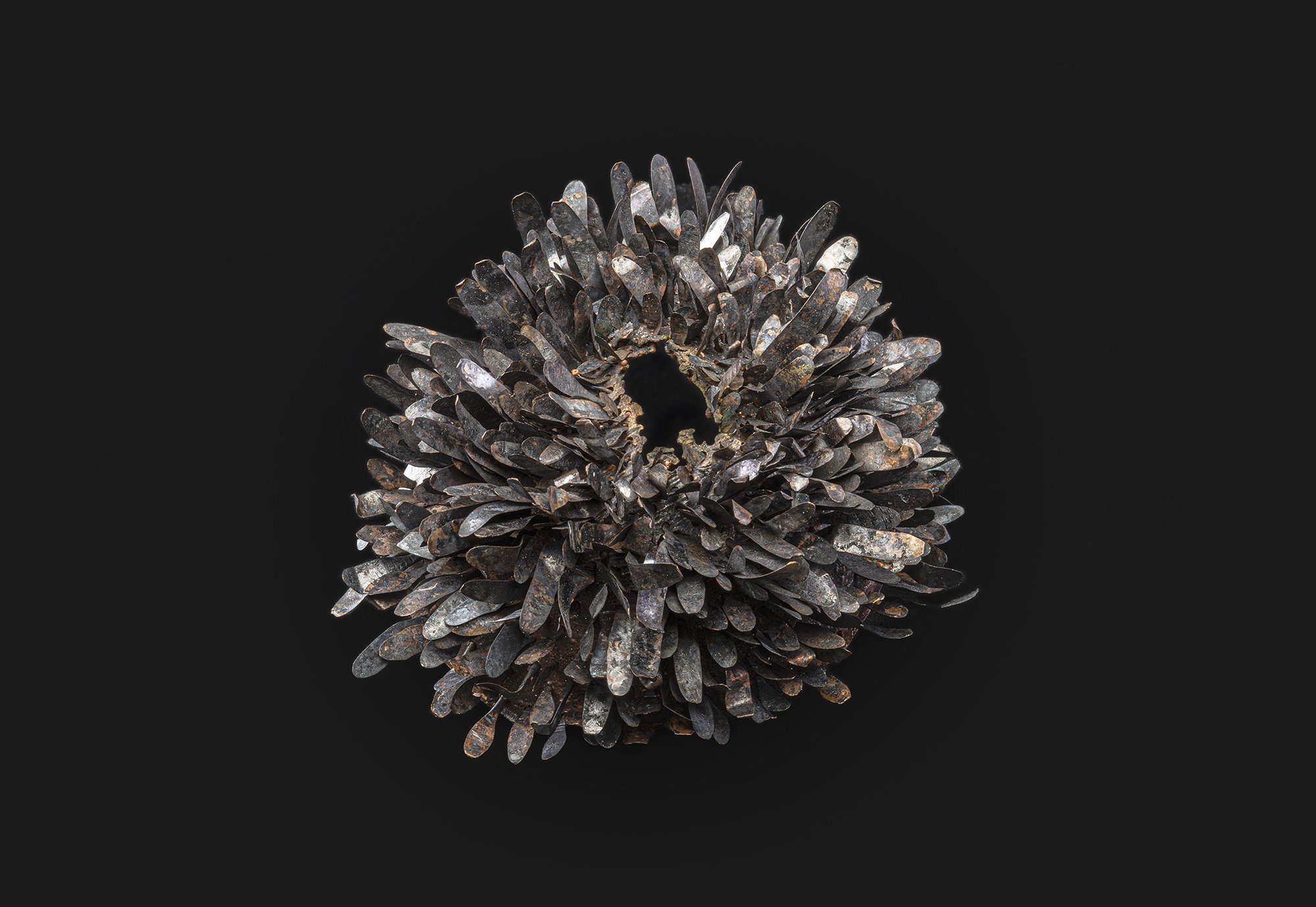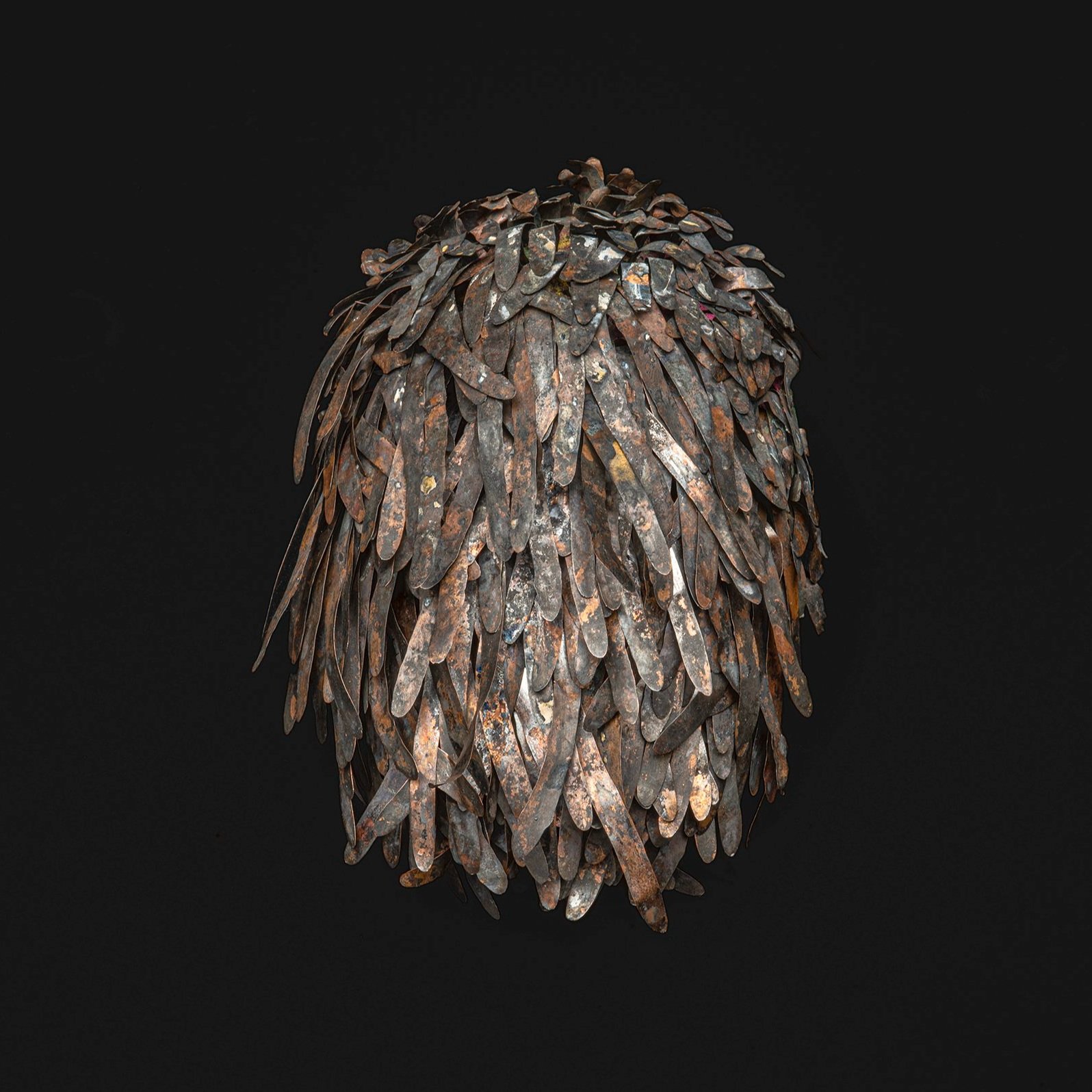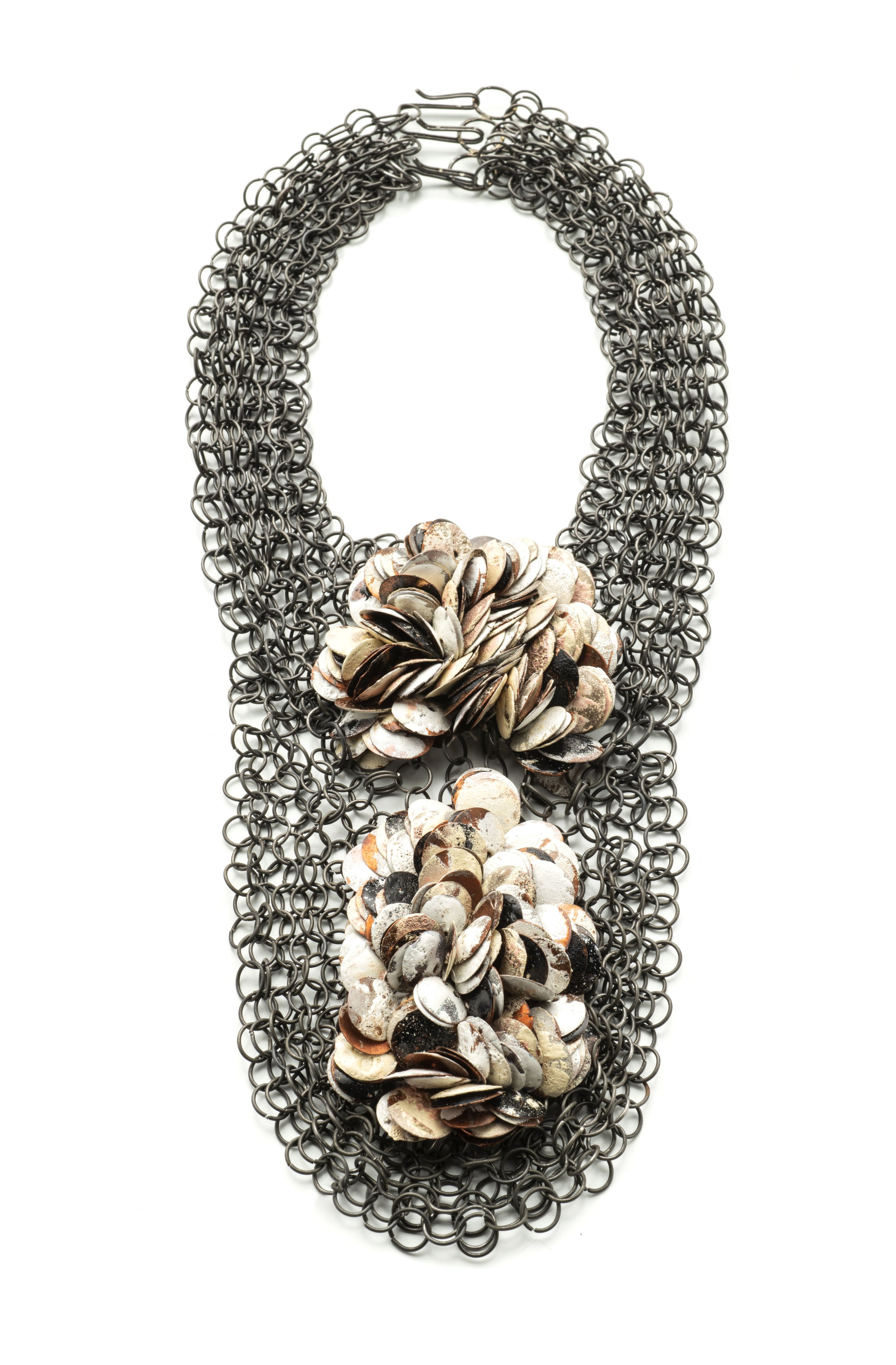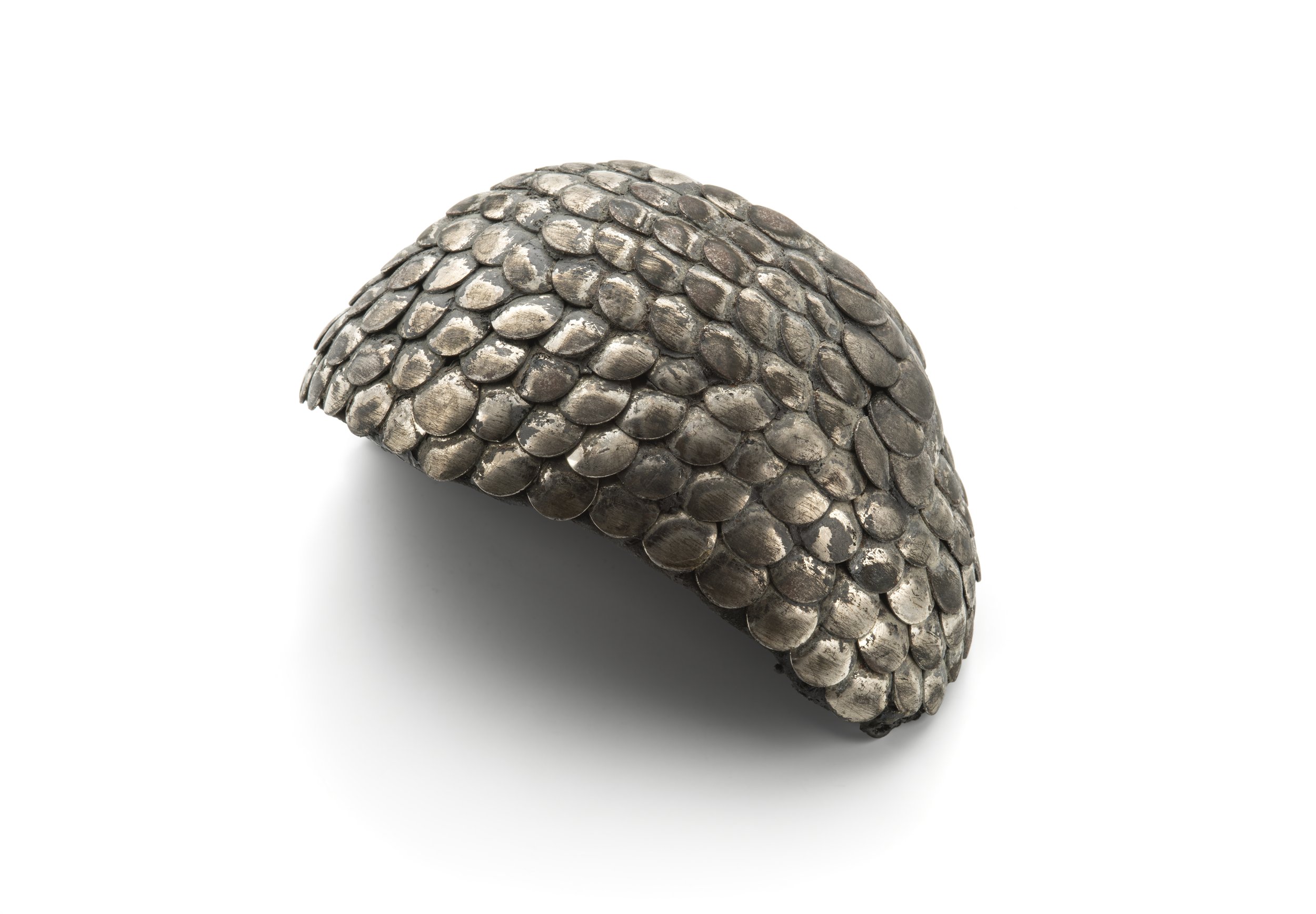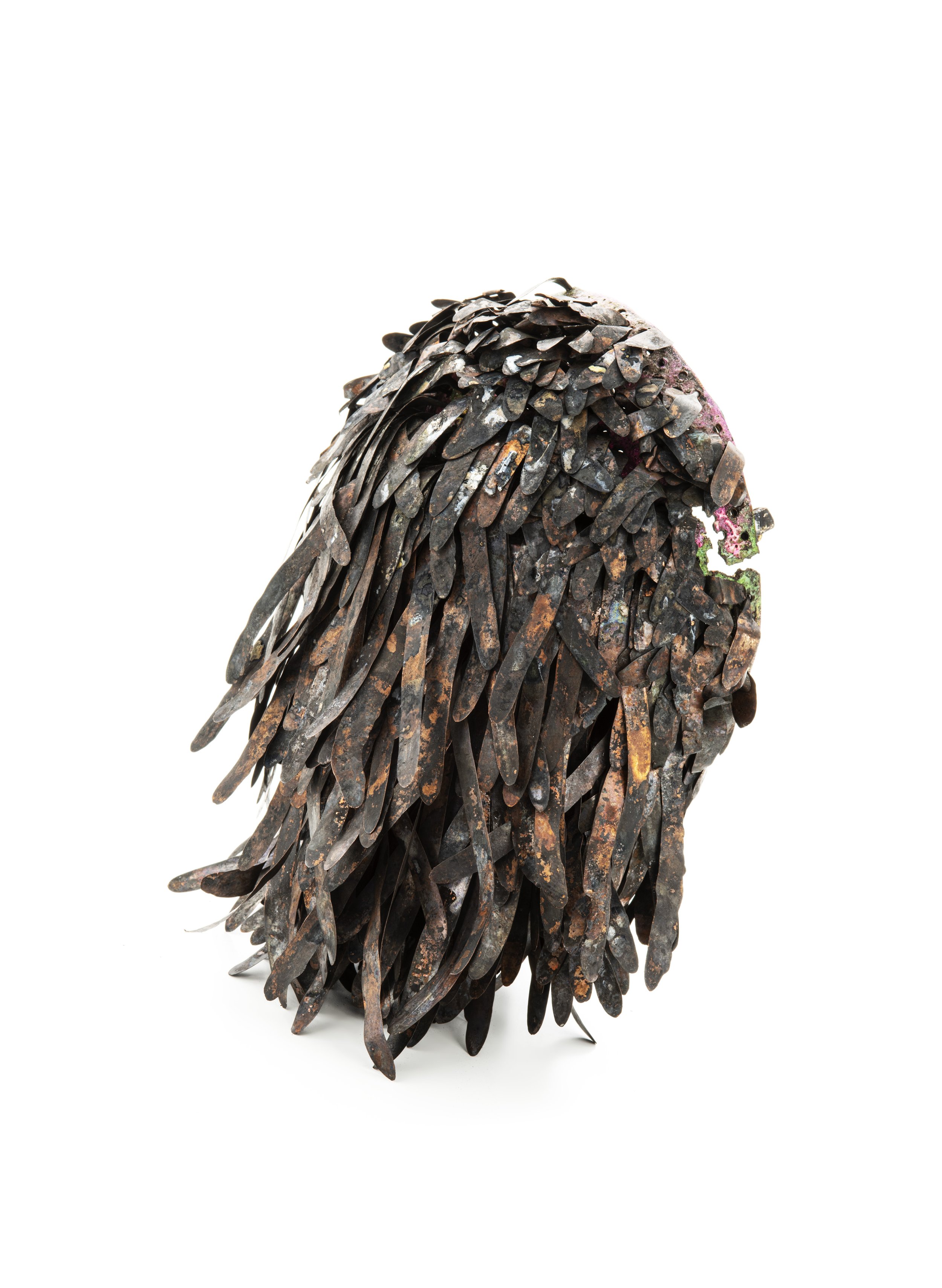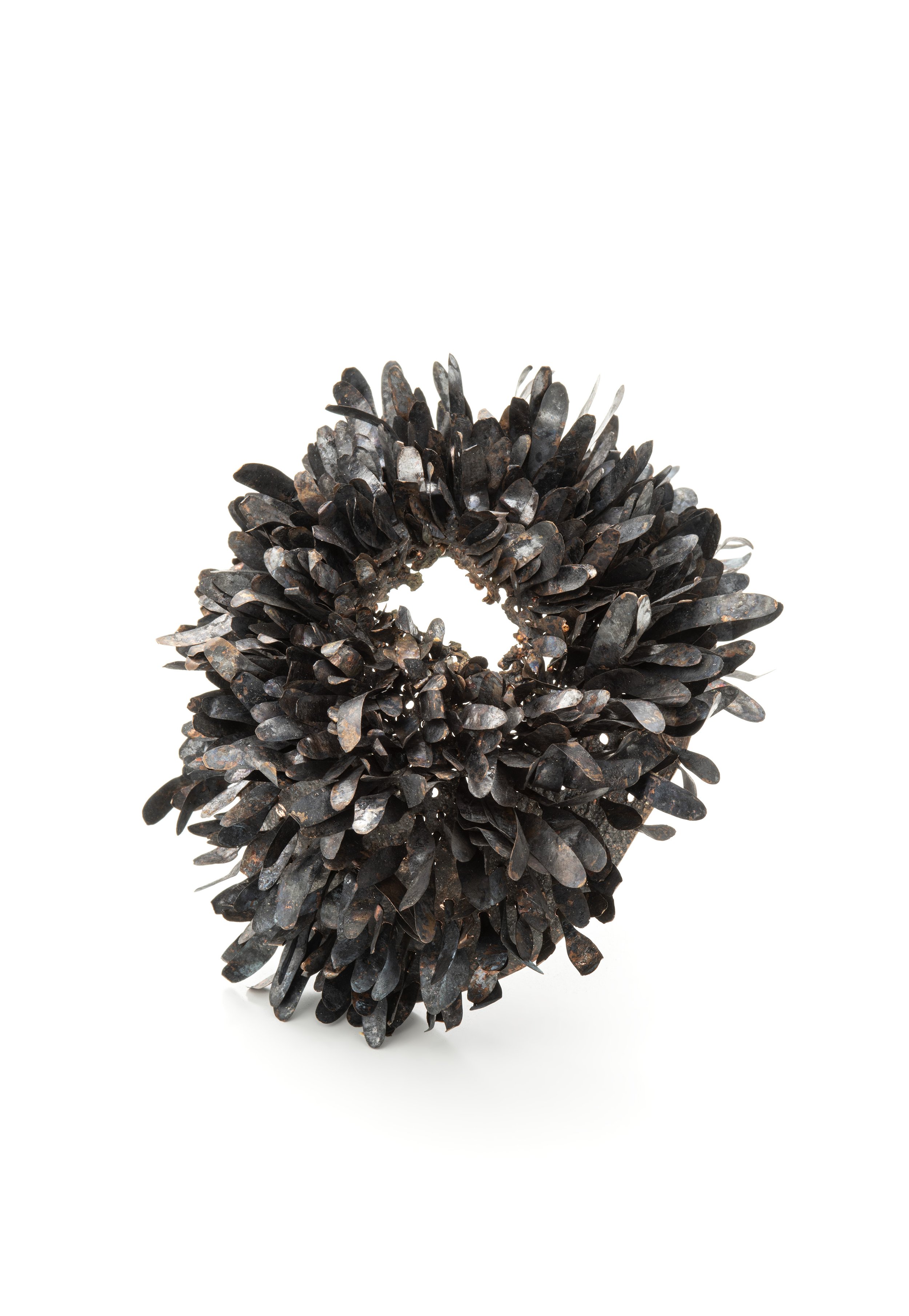The Story of Breccia Studio
Could you tell me a little about yourself?
I'm Alessia Prati, an Italian artist born in '92, specializing in contemporary jewellery with a rich background in arts and design. Currently based in Piacenza, I founded Breccia Studio in 2023, a space where my artistic vision unfolds as a design brand.
Here, I consistently create unique, accessible, and wearable pieces. My goal is to offer a broader audience the chance to own an unparalleled jewel, a small work of art. Through my diverse background, including graduating in fashion design from Milan's Politecnico in 2014 and completing a BFA+MFA at the renowned Alchimia Contemporary Jewellery School in Florence in 2021, I've earned recognition in international fairs and exhibitions. Beyond creating, I've ventured into teaching and empowering others through self-designed workshops, a journey I plan to enhance and continue in the coming years.
How would you describe your artistic style, and what themes or concepts do you explore in your work?
My artistic style is characterized by a departure from conventional jewellery norms, embracing a contemporary and transformative dimension. I create pieces that are not just accessories but entities that invite interaction, challenging the traditional role of jewelry. Themes of self-acceptance, individual empowerment, and social and political narratives play a significant role in my work. Motivated by my involvement in the LGBTIQ+ community and activism, I weave messages of diversity and inclusion into my creations. The desire to encourage mindful choices in a world dominated by mass production is another recurring theme. My work serves as a form of expression and education, advocating for quality craftsmanship over the soulless 'everything now' culture.
What do you hope people feel or experience when they wear your jewelry?
When individuals approach, explore, touch and ultimately wear my jewelry, I aspire for them to undergo a transformative experience. These pieces are not merely adornments; they serve as tangible symbols of inner strength, prompting wearers to rebel against societal norms and embrace their authentic selves. I envision wearers feeling a sheltering protection, akin to holding a trusted friend. As the jewellery reacts to touch, comes alive with sound, and surprises with weight, I want the wearer to engage in a sensory journey. Each piece becomes a conscious part of their transformative process, a reminder of their innate power, and a visual expression of rebellion against conformity. In essence, my hope is that wearing my jewellery is not just an act of adorning oneself but an act of celebrating individuality, encouraging a rebellion against the norm, and fostering a conscious journey towards self-discovery and acceptance. To describe my pieces I like to use “Sýn”, that as a word comes from the Greek prefix σύν, for togetherness, union, complexity and con-temporality. As in the word “symbiosis”: Sýn+life or “synesthesia: Sýn+perception.
What materials do you most enjoy working with, and why? How do you approach the design process, and what are some of your favorite techniques or methods?
I work primarily with non-precious metals, such as copper and iron transformed through patination, texturing, and enameling, along with precious metal elements like white and yellow gold finishes. I also enjoy using textile elements. The techniques I employ focus on lengthy and repetitive processes: I forge each small element of a single piece of jewelry from scratch, often involving hundreds of elements (and hours of work). Starting from raw materials, I forge, cut, hammer, and apply patinas and chemicals to achieve a refined appearance. Each of these small "modules" is then meticulously joined using obsessive and repetitive techniques to form the complete work. These techniques also allow each element to have its own mobility.
My jewelry is often designed to be appreciated in motion, offering a 360- degree view, as the front and back, inside and outside, are markedly different and require examination from all angles for a full understanding. Among my preferred connecting techniques, the act of sewing elements onto a hand-drilled base is a recurring theme, often using textile elements like raw silk thread. Alternatively, elements are inserted and secured through the use of micro-arc welding. In the case of iron, it is intricately woven into chainmail, sometime following and reinterpreting the original pattern of medieval European chainmail. This intricate process creates a kind of ritual complicity between me (the creator) and the object, involving both meditative and exhaustive aspects. I link hundreds of elements, forging connections, and construct a microcosm composed of many small planets. This, for me, is the crucial physical feedback of the creative act — a ritualistic bonding with the object.
How do you approach finding inspiration for your work, and what advice would you give to other artists struggling with creative block?
My inspiration, as the immediate one (let’s say as in the blank page moment), springs from the materials themselves — exploring their unconventional use, transformations, and diverse expressions. I let my hands guide an instinctive assembly, playing with color and connectivity. As a general rule, visits to art exhibitions deeply influence me in a profound, subconscious way. I am captivated by those art happenings leveraging vast spaces for spatial or site-specific creations, like Milan's Hangar Bicocca. These immersive experiences evoke sensations, faded images, memories, and represent metaphorical means of transportation. In my work, I echo these encounters, intertwining them with my themes. Aesthetic resonance in novels, stories, poems, and visual compositions underscores the importance of diverse exposures—an influential interplay of physical and mental feedback.
Another big core for my inspiration stems from actively seeking collaborative moments with fellow artists and individuals who write, do political activities or performative shows. In the inherently solitary realm of a goldsmith, my sustenance comes from immersing myself in the worlds of other artisans and engaging in creative brainstorming with artists traversing diverse paths. Within these interactions, the seeds of small projects and collaborations invariably sprout. The act of conversation and deeply experiencing the creative atmospheres of others serve as a profound wellspring of stimulation. I firmly advocate that, particularly amid creative blocks, seeking feedback from colleagues and opening oneself to explore varied aesthetic forms, others' workshops, diverse workspaces, and collections of objects and tools can be an immensely enriching experience. It's in these explorations that the most captivating fires often find their genesis from unexpected, seemingly minor sparks.
What advice would you give someone who is just starting out in jewelry making?
Fall in love with the processes. When I started, I discovered that being at the workbench and practicing goldsmithing exercises is the only activity where I can truly take my time and create my space. I'm usually impatient, rushed, and nervous, but not at the bench. Fall in love with the processes — the constant search for the best way to execute a technique, marvel at how changing the angle of a file radically alters the result.
Fall in love with metals; find your favorites and talk about their merits and flaws, engage with them, understand their quirks. Fall in love with tools and techniques; adore some to madness, detest others to tears — don't be lukewarm. Then, experiment, really experiment: use absurd materials while you can, while you're a student—leaves, soap, scraps, bones, things found on the street, different woods, fabrics and threads, stones and cements... try everything, understand what speaks to you. But do it well, perform a thousand actions on materials, even the craziest ones; chew them, unite them, melt them, crumble them and reassemble them, burn them, throw them, caress them—try things that seem stupid, senseless, and let yourself be amazed.
If you're just starting, you have a path with a thousand branches ahead of you. Understand who you are by giving yourself time to explore all that inspires you. Let your artistic sensibility be drawn from things, from others' work, from books, from mentors—don't limit yourself. Gradually, you'll discern which turns and curves are yours, but don't fixate, absolutely don't fixate from the beginning on something thinking you have to do that or like it because it would be frustrating. I really wanted to enjoy working with plastics for example when I started, well, I tried a lot, but it's just not for me. That's okay—your hands will tell you if you're heading in the right direction or not.
What are your favorite things to do outside of making jewelry?
While crafting jewelry demands a certain discipline, my passion for art led me to a hobby that is equally creative but more physical and liberating. Considering myself a curious and exhibitionist person, blended with my activist inclinations and involvement in the LGBTQI+ community, I couldn't help but venture into drag. You might wonder if a girl can be a drag queen, and the unequivocal answer is yes. Performance and theatricality are the keywords, and that's where I enjoy spending my time when I'm not working on my art pieces. Again, I'm also an activist and serve as a volunteer at a welcoming desk for sexual minorities in my free time. Drag is the seemingly light but profoundly significant form through which I express these visceral interests and need of self affirmation with my body.
Can you share any upcoming projects or exhibitions where our readers can see your work?
I am delighted to announce the opening of "Con-Ver-Genze" on October 20, my upcoming solo exhibition (but not exclusively personal, and now I'll explain how) which will take place in Piacenza, Italy in the frame of Palazzo Ghizzoni Nasalli. It will be an event designed to allow the audience to experience contemporary jewellery in different ways. Not only my pieces will be exhibited, but also large fine art prints featuring a model wearing and interacting with the pieces in unconventional ways.
Additionally, a video of the performer moving and interacting with some pieces will be projected. All of this will be in dialogue with spaces in decay and invaded by nature. Twilight and sounds, plant arrangements will complement the environments, ranging from the interiors of an old greenhouse to the external corridor partly overrun by the vegetation of a noble palace.
Finally, the experience culminates in the gardens, where people can converge to meet our wine and spirit sponsors offering refreshments. The project involved myself as artist and art director, a curator, a model-performer, a photographer, and an artist who handled the editing of prints and video making, including the generation of sounds.
Con-Ver-Genze will be open for visits on October 20 from 6:30 PM to 9:30 PM, on October 21 and 22 from 10 AM to 1 PM and from 3 PM to 7 PM, and on October 22-23 by appointment only.





